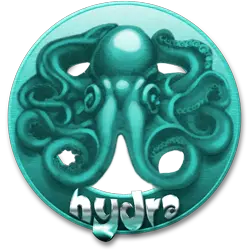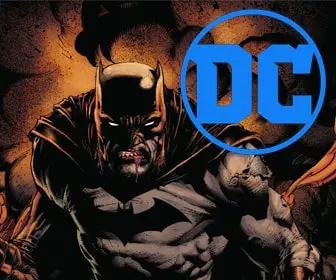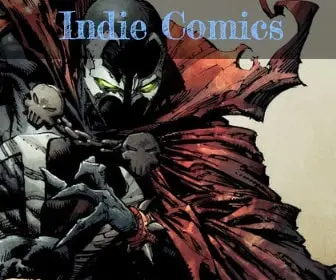
The New Mutants: Marvel’s Teenage Heroes
Marvel Comics has never shied away from innovation and diversity in its storytelling, and the creation of the New Mutants in the early 1980s stands as a testament to this legacy. First appearing in “Marvel Graphic Novel #4” in 1982, the New Mutants were introduced as a new generation of mutants, students at Xavier’s School for Gifted Youngsters, poised to take up the mantle from the iconic X-Men. Conceived by writer Chris Claremont and artist Bob McLeod, the New Mutants were unique not just for their youthful characters, but for their blend of cultural and personal backgrounds, reflecting a broader, more diverse audience.

The introduction of the New Mutants was not merely an expansion of the X-Men universe; it was a bold statement about the potential of comics to explore complex themes through the lens of youth and diversity. These characters faced not only the typical challenges of adolescence but also the complexities of their emerging powers and the prejudices against mutants in their world. This combination of teenage drama and superhero action captured the hearts of readers and expanded the scope of what superhero narratives could achieve. In this article, we’ll delve into the origins, key members, significant story arcs, and the lasting impact of the New Mutants, exploring how they reshaped Marvel’s narrative landscape and continue to influence it to this day.
Origins and Creation
The New Mutants sprang from the fertile mind of writer Chris Claremont, who had already achieved great acclaim with his work on the X-Men. Claremont, alongside artist Bob McLeod, envisioned a new team that would step out from the shadows of their predecessors to tell a story that was distinctly their own. The New Mutants were introduced at a time when Marvel Comics was looking to expand its audience and explore new dimensions of the mutant mythos.
The early 1980s were a transformative period for the comic book industry, with writers and artists pushing the boundaries of the superhero genre. Claremont, known for his deep characterizations and complex plots, saw an opportunity to delve into the untapped potential of younger mutants learning to cope with their powers. The aim was to create a series that could resonate with younger readers while addressing the themes of growth, identity, and belonging—themes that were central to the X-Men but seen here through fresher eyes.
The decision to launch the New Mutants was also influenced by the success of the X-Men’s international and diverse cast, which had resonated well with fans. Marvel wanted to replicate this success by introducing a new group of teenagers from various cultural backgrounds. This included Sam Guthrie (Cannonball) from Kentucky, Rahne Sinclair (Wolfsbane) from Scotland, Danielle Moonstar (Mirage) from the Native American Cheyenne nation, Roberto da Costa (Sunspot) from Brazil, and Illyana Rasputin (Magik) from Russia. Each character brought a unique perspective and background, enriching the narrative and broadening the appeal of the comic.
The New Mutants debuted in “Marvel Graphic Novel #4: The New Mutants,” which was unusual at the time because graphic novels were still a novel format for introducing new characters. This format allowed Claremont and McLeod to flesh out a full and nuanced introduction to the team, setting the stage for a series that would challenge and expand the expectations of superhero comics. With their distinct identities and personal challenges, the New Mutants were not just students of Xavier’s School; they were a vibrant new chapter in Marvel’s ever-evolving universe.
Character Dynamics and Key Members
At the heart of the New Mutants’ narrative were its characters, each bringing their own unique backgrounds, cultures, and personal struggles to the team. This diversity was not just in their powers, but also in their personal stories, making them relatable to a wide audience.
Sam Guthrie (Cannonball) – Hailing from Kentucky, Sam’s mutant ability allows him to propel himself through the air like a human rocket, creating a field of invulnerability around him during flight. As the eldest and often the de facto leader, Cannonball represents the quintessential ‘big brother,’ striving to protect his teammates while dealing with the burden of leadership.
Rahne Sinclair (Wolfsbane) – A Scottish mutant with the ability to transform into a wolf or a werewolf-like creature. Rahne’s deeply religious upbringing conflicts with her mutant identity, creating rich storylines about faith, acceptance, and self-discovery. Her struggle and eventual reconciliation with her dual nature are central themes that resonate with the complexities of adolescence.
Danielle Moonstar (Mirage) – A Native American (specifically from the Cheyenne nation) whose initial powers allow her to create visual empathetic illusions of an individual’s fears or desires. Danielle’s leadership skills and fierce determination make her a central figure within the team, often challenging the others to confront their fears and grow stronger.
Roberto da Costa (Sunspot) – A Brazilian mutant with the ability to absorb solar energy and convert it into physical strength. Roberto’s wealthy background and confident demeanor bring a different dynamic to the group, often providing comic relief but also exploring themes of isolation and the pressure of expectations.
Illyana Rasputin (Magik) – A Russian mutant with the ability to teleport across space and time, and a sorceress with control over the mystical dimension of Limbo. Illyana’s story is one of the most complex within the team, grappling with issues of corruption, power, and redemption. Her journey from a naive girl to a powerful sorceress mirrors the transition from innocence to experience, a central theme in many adolescent narratives.
The interplay between these characters provided a rich tapestry of stories. Their interactions, from daily school life to their battles against mutant threats, were a microcosm of the broader world issues, reflecting themes of tolerance, diversity, and the challenges of growing up. This dynamic made the New Mutants a distinctive and beloved addition to the Marvel Universe, offering readers characters with whom they could identify and from whom they could learn.
Significant Story Arcs and Contributions
The narrative journey of the New Mutants is marked by several significant story arcs that not only deepened the characters’ developments but also left a lasting impact on the Marvel Universe. These storylines showcased the team’s growth and tackled various themes, making substantial contributions to the broader tapestry of superhero narratives.
The Demon Bear Saga – This arc is perhaps the most iconic and defining moment for the New Mutants. Written by Chris Claremont and stunningly illustrated by Bill Sienkiewicz, the story centers around Danielle Moonstar’s confrontation with the Demon Bear, a malevolent entity from her nightmares that had killed her parents. The saga blends psychological horror with superhero elements, pushing the boundaries of visual and narrative storytelling in comics. It’s a poignant exploration of fear, trauma, and resilience, as the team battles not only the external threat but also their internal demons.
Legion – The introduction of David Haller, or Legion, a powerful mutant with dissociative identity disorder, in the New Mutants’ stories added a complex layer to the narrative. Each of his alternate personalities controls one of his many powers. The “Legion” storyline explores themes of mental illness and the consequences of immense power, contributing significantly to the X-Men universe by adding depth and nuance to the portrayal of mental health issues.
Inferno – During the ‘Inferno’ crossover event, the New Mutants faced demonic forces that invaded New York, leading to significant changes in team dynamics and individual members. The event tested the team’s resilience and unity, leading to dramatic transformations, notably in Illyana Rasputin’s character. This arc was crucial for integrating the New Mutants more deeply into the central Marvel storyline, showing how these younger heroes handle crises that affect the larger world.
Warlock and the Technarchy – The introduction of Warlock, a member of the alien Technarchy race, brought a unique element to the team. Warlock’s struggle to understand human emotions and his friendship with the team, especially with Cypher, provided a touching narrative about acceptance and the meaning of humanity. This storyline broadened the scope of the New Mutants’ adventures by incorporating science fiction elements and addressing themes of alienation and friendship.
Graduation and Transition to X-Force – As the series progressed, the New Mutants matured, culminating in their graduation from Xavier’s school and the transition of several members into the more aggressive and militant X-Force. This marked a significant evolution in the team’s identity and narrative direction, reflecting the changes in the comic book industry towards darker and more complex storytelling.
These story arcs not only challenged the characters but also engaged readers with their innovative approaches to superhero drama. Through their trials and tribulations, the New Mutants significantly contributed to Marvel’s narrative development, paving the way for future stories and ensuring their place in the annals of comic book history.
Cultural Impact and Legacy
The New Mutants have left an indelible mark on the comic book landscape, both culturally and within the Marvel Universe itself. Their stories have resonated with audiences for their heartfelt portrayal of adolescence, diversity, and the struggle for identity, positioning the team as a seminal influence on subsequent superhero narratives.
Reflection of a Diverse and Changing World – At its core, the New Mutants was a reflection of a more diverse and changing world. The series was pioneering in its inclusion of characters from various ethnic backgrounds and nationalities, offering a richer, more varied perspective than many of its contemporaries. This inclusivity helped Marvel Comics connect with a broader audience and set a precedent for future comic book creations, encouraging the industry to embrace diversity in its storytelling.
Influence on Future Teams and Stories – The success and popularity of the New Mutants influenced the creation of other young superhero teams, both within Marvel and across the industry. Teams like Generation X and the Young Avengers owe much to the formula established by the New Mutants, which proved that stories about younger characters could be just as compelling and complex as those about adult heroes. The series also pushed the boundaries of what could be explored in superhero comics, dealing with complex issues such as mental health, personal trauma, and the existential crises that come with burgeoning powers.
Media Adaptations and Continued Relevance – The legacy of the New Mutants extends beyond the pages of comic books. The team has been featured in various media, including animated television series and a 2020 live-action film. Although the film adaptation faced challenges and received mixed reviews, it underscored the lasting appeal of the characters and the potential for exploring darker, more nuanced aspects of the superhero genre.
Enduring Fan Engagement – The New Mutants maintain a dedicated fan base, evident from the continued interest in their stories and characters in reprints and new comic book series. The characters’ journeys, struggles, and triumphs continue to inspire and engage new generations of readers, attesting to the series’ enduring relevance.
Contributions to Marvel’s Evolution – The New Mutants contributed significantly to the evolution of narrative complexity in Marvel’s comics. Their stories were among the first to seamlessly integrate themes of horror, psychological drama, and traditional superhero action, creating a hybrid genre that would influence countless future narratives in the Marvel Universe.
Through their dynamic character development, groundbreaking narratives, and commitment to diversity, the New Mutants have not only left a legacy of innovation but have also played a critical role in shaping the direction of superhero storytelling. Their impact is a testament to the power of comics as a medium for exploring the human condition through the lens of the fantastical.
Collectors

For fans of Marvel’s New Mutants, certain issues stand out as must-haves due to their significance in the development of the team and its members, as well as their impact on the comic book genre. Here are five New Mutants issues that are essential for any collector:
- Marvel Graphic Novel #4: “The New Mutants” (1982) – This is the debut of the New Mutants team, written by Chris Claremont and illustrated by Bob McLeod. It’s the origin story where the team is formed and sets the stage for all future narratives. Owning this graphic novel is akin to having the first piece of the New Mutants saga.
- The New Mutants #18 (1984) – The start of the “Demon Bear Saga,” this issue marks a significant shift in the series’ tone and art style, with Bill Sienkiewicz taking over as the artist. This arc is one of the most critically acclaimed and is crucial for its deep psychological exploration and innovative visual storytelling.
- The New Mutants #26 (1985) – This issue introduces the character of Legion, the incredibly powerful mutant with multiple personalities. Legion would go on to be a central figure in some of the most compelling New Mutants storylines and significantly impact the broader Marvel Universe.
- The New Mutants #87 (1990) – While not directly part of the initial runs, this issue is notable for the first appearance of Cable, who becomes an essential character in the later development of the team and leads to the transition of some members into X-Force. Written by Louise Simonson with art by Rob Liefeld, this comic is pivotal for its influence on the 1990s comic book style.
- The New Mutants #100 (1991) – The final issue of the original New Mutants series, marking the team’s transition to X-Force. This issue is a key piece of comic history, representing a changing era in superhero comics and the maturation of the characters that fans had followed since their inception.
Each of these issues encapsulates critical moments in the life of the New Mutants, making them valuable both as collectibles and as important chapters in the history of comic books.
Denouement
As we reflect on the journey and contributions of Marvel’s New Mutants, their enduring relevance within the Marvel Universe is unmistakable. The series not only provided a platform for exploring the complexities of youth and power but also set new standards for storytelling in the superhero genre.
The New Mutants have undergone various transformations, from their initial portrayal as students learning to harness their abilities to becoming key players in larger Marvel narratives. Their evolution from a standalone team to integral parts of expansive story arcs like “Inferno” and their transition into roles within X-Force and other groups highlight their adaptability and enduring appeal.
The future of the New Mutants remains a canvas of immense potential. With the comic book industry continuing to evolve and the cinematic portrayal sparking new interest, there is ample opportunity to explore deeper layers of these characters and their stories. The ongoing fascination with their struggles and triumphs suggests that the New Mutants will continue to inspire, entertain, and provoke thought among audiences old and new.
In conclusion, the legacy of the New Mutants is a vibrant testament to Marvel’s commitment to diversity and complex storytelling. As they continue to resonate and influence the broader tapestry of superhero narratives, the New Mutants stand as a beacon of innovation and a mirror to the ever-changing human experience, wrapped in the fantastical. Their journey reminds us that at the heart of every hero’s journey is the universal quest for identity, belonging, and purpose.
















